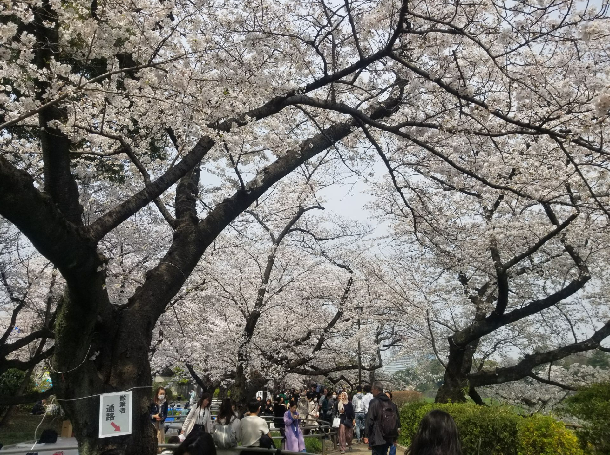April, a time for beginnings
Different cultures mark the beginning of the year in different ways. There is the calendar year, for example set by the Gregorian calendar or lunar calendar. There is the academic school year, the start date for which differs vastly by country and region. Japan uses the Gregorian calendar to mark the start of the year as 1 January, but it is one of the countries where the fiscal year starts in April. (Other countries that follow this schedule include Australia and New Zealand.) The academic school year also starts in April; this is thought to coincide with the fiscal year.

April is also a significant month in Japan because the sakura cherry blossoms, the common marker of spring, enters full bloom in late March and early April. A previous post on this blog from last year explains the practice of hanami (Cherry blossom viewing). Japan’s spring, with all its symbolic underpinnings of fresh starts and new life, coincides with a time of year with many large life events, such as school, or new careers.
Because the fiscal year begins in April, it also marks the start date for many new college graduates due to Japan’s unique shinsotsu (new graduate) recruitment culture. Japanese companies recruit batches of new graduates in April after the academic year ends in March, and ‘hire, train, and develop the future talent of the company’.
(To read a detailed explanation on this practice, DISCO Inc. has an excellent document detailing this recruitment culture: http://www.disc.co.jp/en/resource/pdf/SHINSOTSUCulture.pdf)
This year e-Jan has three new employees that started this April. e-Jan’s small size only necessitates a few new employees at a time, but large corporations often recruit large batches of new graduates and train them all at once. As our fresh-faced new employees start off this new page of their life, we wholeheartedly welcome them to the fold and wish a hearty congratulations to others during this time.
-N.M. (U.S.A)

April is also a significant month in Japan because the sakura cherry blossoms, the common marker of spring, enters full bloom in late March and early April. A previous post on this blog from last year explains the practice of hanami (Cherry blossom viewing). Japan’s spring, with all its symbolic underpinnings of fresh starts and new life, coincides with a time of year with many large life events, such as school, or new careers.
Because the fiscal year begins in April, it also marks the start date for many new college graduates due to Japan’s unique shinsotsu (new graduate) recruitment culture. Japanese companies recruit batches of new graduates in April after the academic year ends in March, and ‘hire, train, and develop the future talent of the company’.
(To read a detailed explanation on this practice, DISCO Inc. has an excellent document detailing this recruitment culture: http://www.disc.co.jp/en/resource/pdf/SHINSOTSUCulture.pdf)
This year e-Jan has three new employees that started this April. e-Jan’s small size only necessitates a few new employees at a time, but large corporations often recruit large batches of new graduates and train them all at once. As our fresh-faced new employees start off this new page of their life, we wholeheartedly welcome them to the fold and wish a hearty congratulations to others during this time.
-N.M. (U.S.A)











